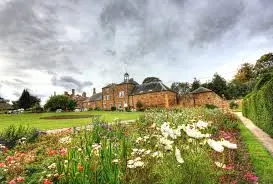Battle of Northampton
The Battle of Northampton was fought on 10 July 1460. Notable as being the only encounter of the Wars of the Roses in which a fortified camp was attacked, and the first in English history to see the use of batteries of gunpowder based artillery, the battle marked a major turning point in the fortunes of the Yorkist and Lancastrian factions. From being forced into flight at Ludford, then attainted at the Coventry ‘Parliament of Devils’, the Yorkists transformed their fortunes on the field of battle near Northampton. Victorious in battle, the Calais Lords gained possession of King Henry VI, gained control of a partisan Council and Parliament, and had killed several of their most prominent adversaries in the process.
…in the year 1460, the said earls crossed over from Calais, and landed in Kent; shortly after which, a great battle was fought near Northampton, on the feast of the Martyrdom of the Seven Brethren, in the month of July, between king Henry and the above-named earls, with their respective adherents. There fell on the king’s side, the duke of Buckingham, the earl of Shrewsbury, the lord viscount Beaumont, the lord Egremont, and other nobles, with common men innumerable. The earls, having thus gained the victory, paid all the honors of royalty to king Henry, and conducted him with a most august escort to London; Richard Neville, the before-named earl of Warwick, on this occasion, carrying a sword before the king, bare headed, and with every mark of humility and respect.
Croyland Chronicle
Battle of Northampton, 10 July 1460
The Yorkist Lords who had fled to Calais had landed at Calais and marched on London.
Upon arriving at the capital, the force is said to have numbered around 20000. The Lancastrian Commander withdrew into the Tower of London. The Yorkists entered London on 2 July. On 4 July, the bulk of the army marched North. The Earl of Salisbury remained in London and besieged the Tower of London.
The Lancastrians knew that the Yorkist army was on the march. They moved from Coventry to Northampton. Here, they built a fortified camp which was surrounded by a small moat. This was defended by cannon and had the River Nene to its rear.
The Yorkists maintained that they had no argument with the King himself. It was the counsellors with whom they claimed to have an issue. Attempts at Parley were made by the Yorkists. After several attempts, Warwick informed the Lancastrians that they would be attacked at 2pm if no agreement had been made.
The Yorkist army assaulted the Lancastrian position. As they reached the barricade, one of the defenders, Lord Grey, switched sides. His men joined the Yorkists, which gave the attacking force a large breach in the defences into which they could advance. With a river behind them and surrounded by their own defensive moat, the Lancastrians could not form up effectively.
Around the Kings quarters, several leading Lancastrian lords were slain. Their number included the Duke of Buckingham, Thomas Percy, the Earl of Shrewsbury, and Lord Beaumont.
Recommended Links on the Battle of Northampton
UK Battlefield Resource Centre – Battle of Northampton
Northamptonshire Battlefields Society – Battle of Northampton
Image Credit
Delapre Abbey, Northampton. Northamptonshire Walks.
